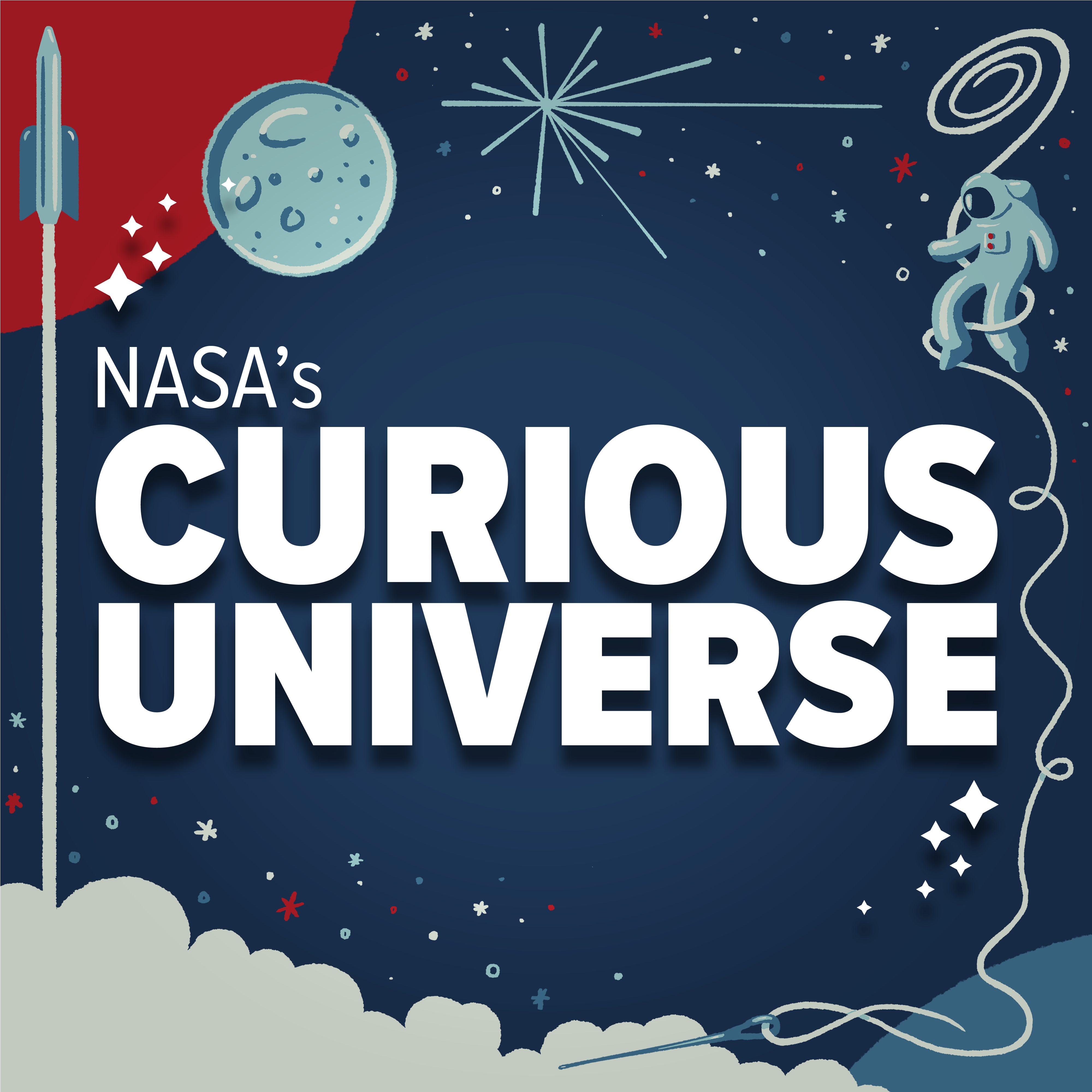Come get curious with NASA. As an official NASA podcast, Curious Universe brings you mind-blowing science and space adventures you won’t find anywhere else. Explore the cosmos alongside astronauts, scientists, engineers, and other top NASA experts who are achieving remarkable feats in science, space exploration, and aeronautics. Learn something new about the wild and wonderful universe we share. All you need to get started is a little curiosity. NASA’s Curious Universe is an official NASA podcast hosted by Padi Boyd and Jacob Pinter. Discover more original NASA shows at nasa.gov/podcasts

Come get curious with NASA. As an official NASA podcast, Curious Universe brings you mind-blowing science and space adventures you won’t find anywhere else. Explore the cosmos alongside astronauts, scientists, engineers, and other top NASA experts who are achieving remarkable feats in science, space exploration, and aeronautics. Learn something new about the wild and wonderful universe we share. All you need to get started is a little curiosity. NASA’s Curious Universe is an official NASA podcast hosted by Padi Boyd and Jacob Pinter. Discover more original NASA shows at nasa.gov/podcasts
For the first time, a NASA spacecraft is flying through the Sun's atmosphere. Nour Raouafi, project scientist for Parker Solar Probe, explains why the Sun's corona is the source of one of the biggest mysteries in all of space science. So, what does it take to build a probe that can touch the Sun—including surviving temperatures of 2,500 degrees Fahrenheit and barreling through sudden eruptions of solar plasma—and live to tell the tale? We'll also go inside the fleet of NASA spacecraft studying the Sun from many angles, including the rescue mission to save a wildly spinning observatory before it became lost in space forever.
From Earth, the Sun can seem steady and predictable. But when you look at our star close up, there’s a lot going on. Go behind the scenes with NASA’s Moon to Mars Space Weather Analysis Office, a team monitoring space weather—eruptions of radiation and plasma from the Sun that can wreak havoc on spacecraft and pose dangers to astronauts. We’ll also revisit the most powerful geomagnetic storm on record, an 1859 event that produced northern lights visible in the tropics and made electrical systems go haywire. This is episode fiof the Sun and Eclipse series from NASA’s Curious Universe, an official NASA podcast.
It’s time. On April 8, 2024, millions of people across North America will see a total solar eclipse. Get the most out of totality with this special bonus episode. Listen up for safety tips, learn how to make your own pinhole projector to safely and learn how anyone—including you!—can contribute to NASA research through citizen science. And if you’re not in the path of totality, watch NASA’s live broadcast starting at 1 p.m. EDT. NASA’s Curious Universe is an official NASA podcast. See when the eclipse starts where you are with NASA’s Eclipse Explorer: go.nasa.gov/EclipseExplorer
How often do you think about your nearest star? Though it may not seem like it from here on Earth, our trusty Sun is a place of mystery. Take a good look at its influence on our planet – through the otherworldly experience of eclipse, maybe, or the aurora – and you might get "sucked" in... to a citizen science project, that is. Join NASA Sun scientists like Liz Macdonald and volunteers like Hanjie Tan to listen to crickets fooled by the false night of an eclipse, discover new colors in the aurora, and hunt for comets hiding in the plasma of our Sun’s atmosphere. And learn how you can get involved in NASA science while experiencing our nearest star firsthand. This is episode three of the Sun and Eclipse series from NASA’s Curious Universe, an official NASA podcast.